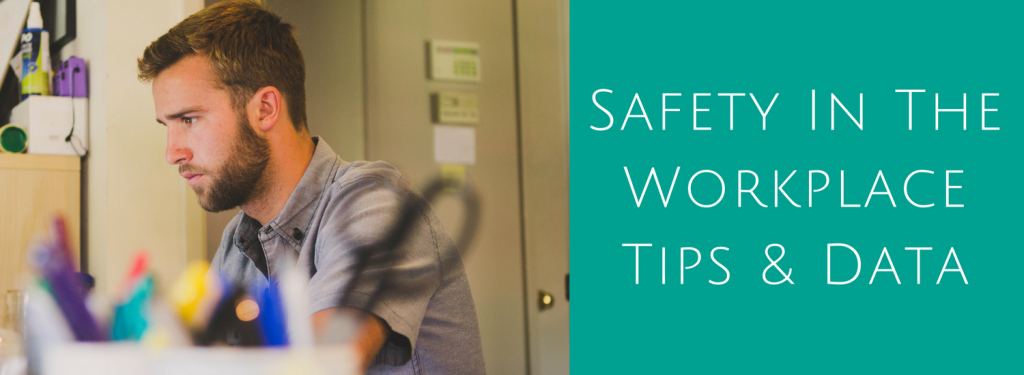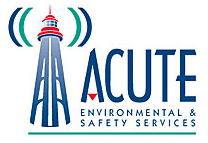
Managing safety in any workplace is important for keeping everyone – from workers to clients to supervisors – safe. The following workplace safety tips will help employees and managers alike create and maintain a workplace where safety is the top priority. A safer working environment requires everyone to be on board. Protect yourself, your workers, and your reputation. Contact the experts at ACUTE today to learn more about safe work practices for your entire team!
Interested in Safety Training Courses?
Top Safety In The Workplace Tips & Data
Good housekeeping can help keep everyone safe in the workplace. Housekeeping refers to eliminating potential hazards in the workplace. The Canadian Centre for Occupational Health and Safety (CCOHS) states:
“Effective housekeeping can eliminate some workplace hazards and help get a job done safely and properly. Poor housekeeping can frequently contribute to accidents by hiding hazards that cause injuries…Housekeeping is not just cleanliness. It includes keeping work areas neat and orderly; maintaining halls and floors free of slip and trip hazards; and removing of waste materials (e.g., paper, cardboard) and other fire hazards from work areas.” – OHS Answers
The following safety in the workplace tips will provide insight and important data that can help make any workplace safer. These tips are relevant for all workplaces, whether you work in an office, an industrial site, a construction zone, or elsewhere. These tips can easily be incorporated into quick team meetings, at-work training sessions, and even used on posters or safety memos around the workplace.
Tip #1: Don’t Become Complacent

Complacency at work is often called a “silent killer” because it is so easy to fall into without realization. Unlike more obvious hazards such as fire hazards or fall hazards, complacency provides a false sense of security. When workers repeatedly complete a task over a long period of time safely and efficiently, it eventually feels like second nature. A sense can develop that nothing can go wrong because nothing has gone up until that point. However, this can be a dangerous way of thinking. Accidents can always happen, and complacency can make workers feel immune. In an article by Simplified Safety, the author says the following about complacency:
“Every single person that has ever been injured or killed on the job could have said – until that point – that this is the way I’ve always done it and nothing has ever happened to me.”
Complacency can happen in any workplace, from construction sites to industrial workplaces to healthcare environments and even in offices. Many slips, trips, minor, and even major accidents are the result of complacency. Providing workers with refresher training, such as Working At Heights Refresher Training, can help prevent complacency.
Tip #2: Actively Prevent Slips and Falls

When many workers think about fall hazards, the first thing that comes to mind is falling from heights. Although falling from heights is a major safety concern, 66% of falls at work happen on the same level (source). Providing workers with proper training is the first important step to preventing both major and minor incidents and accidents. Ensuring workers enroll in courses such as Working At Heights and Fall Prevention can help provide the necessary skills and experience to deal with and prevent accidents at work. Some other tips to keep workers safe from slips and falls include:
- Replacing/fixing worn out or damaged flooring
- Reporting and cleaning spills immediately
- Keeping tripping hazards out of aisles and ensuring exits are cleared
- Using drip pans and guards
- (Source – Learn more here)
It is also important that all workers know how to properly clean up different types of spills, depending on the materials they will be working with. For example, a grease leak or spill cannot be cleaned in the same way you would clean a water spill.
Tip #3: Keep Proper Posture

Ergonomics is an often overlooked aspect of workplace safety, but it is still very important. Correct posture, lifting techniques, bending techniques, and even how you sit in a chair can affect your overall health. According to the 2016 WSIB Statistical Report, 42% of injuries were sprains and strains. The Ontario Ministry of Labour, Immigration, Training and Skills Development (MLITSD) addresses workplace pains and strains. It states:
“Workplace pains and strains are also known as musculoskeletal disorders (MSDs), Repetitive Strain Injury (RSI), Cumulative Trauma Disorder (CTD), and Repetitive Motion Injury (RMI). These types of injuries affect the muscles, tendons, ligaments, and nerves.” – Ontario Ministry of Labour, Immigration, Training and Skills Development
Correct posture and ergonomics can help save employees from dealing with the painful affects of MSDs, an RSI, and other related injuries. It can also help employers save money. According to an estimate by the MLITSD, from 2003-2007, Ontario employers paid more than $1 billion in costs (both direct and indirect) related to MSDs (source). Employers can help educate workers on correct posture and techniques such as lifting techniques. There are also many resources available online, such as articles, infographics, and even videos. Check out the quick video below to learn a bit more about workplace ergonomics.
Tip #4: Identify & Eliminate Fire Hazards

Fire hazards occur in every single workplace and each workplace has unique fire hazards. That’s why it is so important to identify and eliminate these hazards before an incident or accident occurs. Some workplaces may frequently work with dangerous materials, such as combustible waste. There are also flammable items common to many other workplaces. One way to help eliminate fire hazards is to ensure that workers have taken a WHMIS training course.
WHMIS helps workers understand how to safely store, work with, and handle hazardous materials – including materials that may pose a fire hazard. Some other tips to help eliminate fire hazards include:
- Avoid contaminating your clothes with flammable liquids, change clothes if this occurs
- Keep materials at least 18 inches (45 cm) away from sprinklers, and farther if possible
- Store fast burning and flammable materials in designated locations away from any ignition sources
- (Source – Learn more here)
Tip #5: Take Breaks and Reduce Stress

In the workplace, we often forget to take breaks. Stress has almost become the norm in Canada. According to a report done by Statistics Canada, nearly 40% of Canadians suffer from workplace stress (source). Workplace stress can cause many problems for any worker, from employees to managers. Untreated mental health problems can easily lead to physical health problems. Statistics Canada estimated that employers lose approximately $20 billion due to untreated mental health problems (source).
Learning to take breaks and reduce overall stress can help workers feel more comfortable at work, reduce both mental and physical illness, and help prevent accidents. A tired or stressed out worker is more likely to make a mistake. Taking breaks can also reduce workplace injuries such as overexertion. According to the 2016 WSIB Statistical Report, one of the top 5 leading injuries in the workplace was overexertion, making up 13% of workplace injuries. Focusing on the most difficult tasks at the beginning of the workday can help reduce stress and prevent accidents. Ensuring employees take regular breaks and learning stress relief techniques can also help.
Tip #6: Hire Employees Who Have a Safety Mindset

Having a work environment where everyone is on board for safety and safety culture is important. Ensuring that staff encourage each other in practicing good safety techniques and refuse to take shortcuts strengthens workplace safety culture and helps prevent serious accidents. Remember, however, that employers have the responsibility of ensuring workers are safe in the workplace. Under the OHSA (Occupational Health and Safety Act), employer duties include:
- “Taking all reasonable precautions to protect the health and safety of workers;
- Ensuring that equipment, materials and protective equipment are maintained in good condition;
- Providing information, instruction, and supervision to protect worker health and safety”
- (Source – Ontario Ministry of Labour, Immigration, Training and Skills Development – Rights and Duties FAQ)
However, employees have duties under the OHSA too. Duties such as reporting any hazards to supervisors and wearing proper protective equipment are just some of the employee responsibilities outlined by the OHSA. Ensuring workers are ready to learn, want to actively participate in safety training, and are willing to perform their duties under the OHSA will help make any workplace a safer place to be!
Stay Safe at Work With ACUTE!
Hands-on, practical training is the best way to keep employers and workers safe in the workplace! ACUTE is dedicated to workplace safety and understands the importance of course and training provider approval. Why get workplace safety training with ACUTE? Here are just some of the benefits of working with ACUTE.

- Open Door Instructor-Student Partnership – ACUTE’s training services emphasize client participation. Staff foster relationships with clients and serve as a touchstone for advice anytime moving forward.
- Serving Your Team and Industry – With a vast array of clients in manufacturing, construction, health, academic, and government sectors, ACUTE brings the best safety practices from across the spectrum to your workplace.
- 100 Years Combined Experience – ACUTE provides comprehensive health and safety training, on-site safety services, and consulting services. With over 100 years of combined experience, our company staff offer more than theoretical or abstract ideas. ACUTE offers solutions.
- Track Record of Success – ACUTE is rated 4.9/5 stars on Google reviews, demonstrating a commitment to our clients, quality, and passion for training.
“We have relied on ACUTE for years to train our staff and
keep them safe on the job site.”
– Bob, Millwrighting Company – Read More Testimonials Here!
Click here to see what training courses we have at ACUTE or contact us today for quality training in your workplace or on-site at ACUTE’s proven training facilities!
ACUTE is located in Waterloo, Ontario, and services customers from cities such as Toronto, Mississauga, Brampton, Hamilton, Milton, Kitchener, London, Guelph, and others across Ontario.

